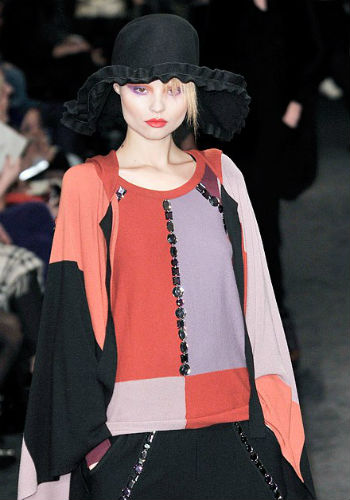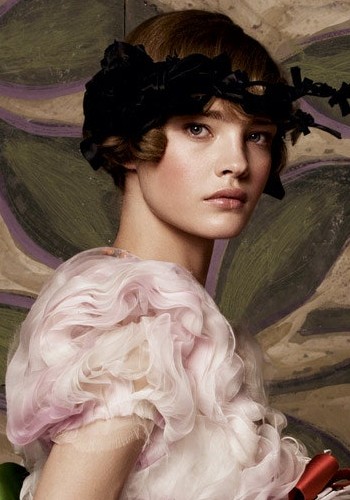Yves Saint Laurent

YVES SAINT LAURENT: THE FIVE STAGES OF THE DESIGNER’S ART
JÉROMINE SAVIGNON ON YVES SAINT LAURENT’S DESIGN PROCESS
From Jéromine Savignon, Yves Saint Laurent’s Studio: Mirror and Secrets (Paris: Actes Sud / Fondation Pierre Bergé–Yves Saint Laurent, 2014) pp. 30-46. All smaller DVD images from David Teboul, Yves Saint Laurent: 5 avenue Marceau 75116 Paris (Éditions Montparnasse DVD, 2002). All larger DVD images from Loïc Prigent, Les dessins d’Yves Saint Laurent (ARTE VOD, 2017).

YVES SAINT LAURENT: 1966 | 1982
Nicole de Lamargé; Brian Duffy, Vogue | Talisa Soto; Bruce Weber, Vogue
The studio of Yves Saint Laurent is a sanctuary. It is the sacred place where his glorifications of woman were ceremonially accomplished, the home of his idols, where he performed all the secret rites of the artist/artisan calling that was his one and only raison d’être. At once refuge and prison, ossuary and womb, it was that unique place where all the couturier’s creative powers converged. There, between dagger and poison, was the beating heart of Saint Laurent’s oeuvre.

Yves Saint Laurent studio
It all began with anguish. An irrepressible anguish. First of all, there was the extreme violence of a profession that he adored, yet which, implacably, four times a year, demanded the paralyzing descent into hell where everything must be called into question. There was the brutal aggression of the factitious novelty demanded by the press, waiting like a wild beast for its prey; and the unbearable cruelty of perfidious rumour, of the ferociously judging eye, the peremptory words that destroyed without seeing or understanding. And then, that suffocating terror of the void, the obsession and despair of the confrontation with the ‘inaccessible star’, that half-glimpsed ‘nothing’ that is ‘everything’. A blind immersion in darkness, yet with the instinctive knowledge that at the end of the night there would always be that burst of radiant light.

Yves Saint Laurent studio
To survive the paralyzing, crucifying torture of anxiety, the only solution for Saint Laurent was Marrakech and the oasis of serenity he created with Pierre Bergé. Perhaps, for this son of the Mediterranean, this Proustian nostalgic for all the skies of Oran, and for the tender, joyous heavens of early childhood, it may have offered a sort of kindly analytic cure that on each occasion allowed him to murder the past while keeping faith with his origins. The sun of Morocco seemed to him even more beautiful than the sun of Algeria. He soaked in the soothing luxuriance of trees and flowers. ‘In Marrakech, I rest my mind clear. I feel good. On every street corner one sees groups that are impressive in their intensity, their relief, evoking Delacroix’s sketches, and which are in fact simply the improvisation of life.’ Solitude, indolence, sensuality, contemplation in the pursuit of a certain truth. Only the ‘Opium’ of Marrakech could lead him to the limits of the world, of his world.

OPIUM SKETCH & ITS REALIZATION IN AN ADVERTISEMENT, 1977
Yves Saint Laurent | Photo: Helmut Newton | Model: Jerry Hall
And then there was this intense happiness of a child marvelling at the knowledge that he had at last ‘discovered the precious message’. ‘How many times did I imagine myself powerless, fragile, desperate before the blackness of habit, and how many times was the curtain torn, offering me a glimpse of the unlimited horizons that have given me the greatest joys and, allow me to say this, real pride.’ His inhibitions swept away, Saint Laurent would now get to work at dizzying speed, never letting up until the collection was complete. Even doubt, if it arose, could be resolved by this dizziness. He drew, without pause, very fast, without thinking, as if in a state of grace. Extra-lucid. He called this the unpredictable ‘miracle of the moment’. ‘The line.’

Yves Saint Laurent fashion sketches from an earlier collection
On ream after ream of white paper, sketch followed sketch, like the magic flow of the imagination in automatic-writing mode. ‘When I pick up a pencil, I don’t know what I am going to draw. I start with a woman’s face and suddenly the dress follows, the clothing resolves itself. It is creation in its pure state, without preparations, without vision. When the drawing is finished, I am very happy.’ Twice a year, in early June and early December, Yves Saint Laurent would thus fly out to Marrakech for a fortnight and return with a little case in rust-red leather, monstrously stuffed with sketches. As the obligatory prelude, the ritual of this quest for the Grail in Morocco is where both the myth and the history of each Saint Laurent haute couture collection was first written.

Yves Saint Laurent fashion sketches from an earlier collection
On the Avenue Marceau, time stood still in the wait for the revelation of these precious and prodigiously eloquent sketches. ‘He put out so many ideas!’ recalls his faithful second, Anne-Marie Muñoz. ‘There was everything, and it all came out just like that.’ And, from the cabine des mannequins—‘those demoiselles of the salon’ as Helmut Newton called them—to the workshops on the second floor, everyone knew now that Monsieur Saint Laurent had ‘found it’ and everyone felt ready to follow him, in a state of total admiration and absolute trust, all the way. ‘Everything at this point is wonderful,’ wrote Saint Laurent. ‘For three weeks, with my workshop, my studio, I and the whole house live through a wonderful and exciting adventure. I am surrounded by a tremendous team that I adore and which feels the same way about me.’

Yves Saint Laurent fashion sketches from an earlier collection
The couture house, with Pierre Bergé at its helm, was like a vast conspiracy where everyone was determined to ‘spare’ him. The password? ‘LOVE’. Between effervescence and silence, feverish activity and fraught meditation, wild laughter and mischievous gaiety, the studio now became the magic stage, the intimate theatre of a five-act play that might be titled ‘Couture and Sentiments.’ Its tall door was usually ajar, open to the noises of the House. Under the authority of the studio director, Anne-Marie Muñoz, and the poetic, energizing gaze of Loulou de La Falaise, the premières and premiers d’atelier (workroom heads), mannequins cabine, embroiderers and favoured suppliers joined and succeeded one another in keeping with a protocol faithfully inspired by the House of Dior.

Pierre Bergé & Loulou de La Falaise, Yves Saint Laurent studio, Avenue Marceau
Still, if Saint Laurent’s need for calm and solitude became too imperious, he would close that door, posting words from Silvana Mangano written in his own hand: Comportatevi bene. Now only the density of the silence in the holy of holies manifested the couturier’s presence. Unless, that is, a few curious workers dared to indulge in the secret rite of the dormer window. In fact, few could resist the temptation. An oeil-de-boeuf window on the workshop floor afforded a view straight into the studio, revealing the figure of the couturier ‘bent over the table where he drew and wrote, half-child and half-monument, so distant and so present’.

Yves Saint Laurent
ACT I: THE REVELATION OF THE DRAWINGS
The first act could be titled ‘The Revelation of the Drawings’. Since the return from Marrakech, they have been jealously hidden away in the studio chest. It falls to Anne-Marie Muñoz to summon the premiers d’atelier to this key rite. Emotions run high, impatience vying with curiosity, but all are certain that the paths along which they are about to be led are sure, that the new collection is already much more than a promise.

Yves Saint Laurent sketches for final couture collection (2001)
Doffing his white coat, as if to mark the importance of this ceremony of discovery, Monsieur Saint Laurent greets them surrounded by a mass of sketches in black and white, spread over tables, or in front of the great mirror, on the carpet. Here Marguerite Duras’s words about Saint Laurent come to mind: ‘Like a writer, every day he writes as if it were the first time, I could swear it. He does what we were waiting for, every year. I mean that he does what we did not know we were waiting for.’ ‘Noise and Silence.’ Boundless admiration for the abstraction embodied by his incisive line. Some may venture a remark about this or that expressive detail of a sketch. All are mesmerized, stunned. Still, choices now have to be made. The very private, one-on-one meetings with the workshop heads—flou (dresses and gowns) and tailleur (jackets and skirts)—will be decisive.

Yves Saint Laurent studio
ACT II: THE ATTRIBUTION OF THE DRAWINGS
The precise moment of this second act—‘The Attribution of the Drawings’—may come immediately or be slightly delayed, but not too long: there are barely three weeks to go before the collection will be airborne. Wearing his white coat this time, the couturier waits, sitting at a worktable covered with dossiers of sketches, carefully organized into categories following the etiquette of haute couture: suits, evening dresses, day dresses, cocktail dresses, blouses, furs, etc.

Yves Saint Laurent studio
Usually, this sequence is initiated by the oldest member of the tailleur workshop. Throughout the studio you can sense a potent emotion, a kind of microclimate where, in an alchemy of modesty and love, the couturier’s timidity melds with the certitudes of the visionary, and his expectancy, waiting to see how the collection will grow when the sketches are interpreted by all those with an intimate, inside knowledge of the Saint Laurent rhetoric. Now, looking at the drawings spread over a table, they can ask questions. ‘We knew that he was really expecting something from us, and gave us great freedom.’ It is a respectful dialogue.

Yves Saint Laurent sketches for final couture collection (2001)
Change a waistline. Soften a shoulder. Raise a collar. ‘You must choose what you prefer, Jean-Pierre.’ And so, choices are made. And if, in this orgy of drawn ideas, a look the couturier particularly liked seems to have been forgotten, he will gently insist, ‘Oh look, Jean-Pierre! Don’t you like that one?’ And, before going back up to his studio, Jean-Pierre adds the precious ensemble to the forty drawings already selected.

Yves Saint Laurent sketches for final couture collection (2001)
Next comes the crucial phase of making the first sketch of the model, in couture cloth for Tailleur items and butter muslin (cheesecloth) for the Flou. The cloth must capture the drawing exactly, and add life. This, as they used to say at Dior, is work for ‘partners’. From the secondes to the ‘little bees’, the whole workshop takes part, but it is the privilege of the premier d’atelier to translate into three dimensions the demanding precision of Saint Laurent’s line. The visual interpretation of the drawing is thus vital to ‘setting it up’ in such a way as to truly express the soul of the design. To an expert eye, the clarity of a Saint Laurent sketch says everything, in a few pencil lines: the nature and direction of the fabric, bias or with the grain, the movement, the hang, the sleeve properly squared, not too little and not too much, and even what cannot be put into words, simply from the way a hand rests on the hips. ‘It is a story without words.’ The rest is all a matter of métier.

Jean Pierre Derbord, premier d’atelier tailleur, Yves Saint Laurent studio
ACT III: THE DAY OF THE TOILES
Then comes ‘The Day of the Toiles’ a more theatrical third act, ‘moving, decisive and hard, too, for that is when I try to discover the secret of the collection,’ wrote Saint Laurent. Its choreography is highly ritualized. Sketch in hand, each premier takes his or her turn to come down to the studio accompanied by the chosen mannequin cabine to ‘pose’, ‘play the cloth’. From his architect’s table, Monsieur Saint Laurent watches for her entrance in the mirror, and it is a success if he recognizes his drawing. If he cannot acknowledge his paternity, the model is rejected, albeit with endless amounts of respect and kindness. ‘Monsieur Saint Laurent does not like to upset his premières who do not like to displease him.’ ‘Each collection has its secret. I try to find a way of recapturing the spirit of the cloth, of keeping in fabric the naivety of a toile, its beauty, its magical character. So, a bit of time goes by. The fabrics arrive and everything falls into place.’
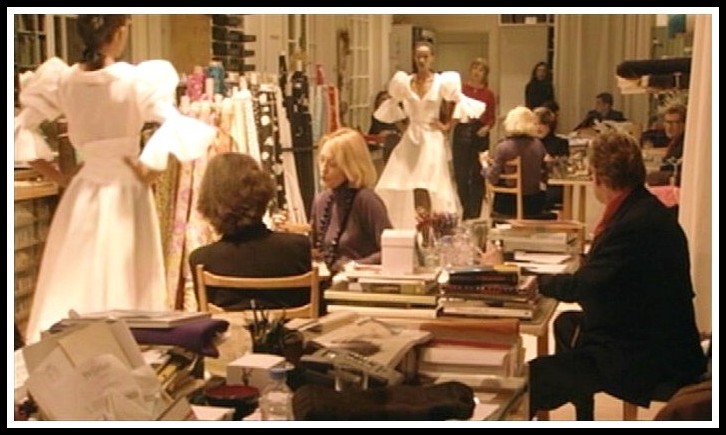
Yves Saint Laurent studio
ACT IV: THE FABRICS MAKE THEIR ENTRANCE
This fourth act, when ‘The Fabrics Make Their Entrance’, so that each toile may find the one that’s right for it, is the passionate and joyous intermezzo of this drama that is the birth a Saint Laurent collection. It is a unique moment of delectation, of religious sensuality, which can also be meditative and grave, when these fabrics which take over the studio are attributed. Crêpes, chiffons, precious silks, grains de poudre—Saint Laurent’s black gold—and all the wonderful, exclusive prints from Abraham, specially designed for the couturier by Gustav Zumsteg: ‘Gustav Zumsteg, my ally, my friend and my partner. I made my finest dresses in his fabrics. His talent was often an endless source of inspiration.’

Yves Saint Laurent studio
Fabric gets everywhere. Rolls stand like colourful totems against the tables and in the window bays, swatches hang over chair backs, the bookshelves are a rainbow-coloured cornucopia of samples and the carpet a patchwork of widths of material and hangers feverishly thrown down for inspection. The Fabric God is in his heaven, and his bespectacled high priest is leading the worship, dressed in his white-coat vestment, given a muted echo by the toile that the mannequin ‘poses’ like a dress. A handful of acolytes attend and, naturally, the two vestals, ‘she who knows, watches over and observes’, Anne-Marie Muñoz, and Loulou, the ‘lightness of crystal’,’ with her catalysing instinct. Unrolling and feeling the heft of a crêpe, wondering about a black, assessing the hand, the feel of a grain de poudre, the swish of seductive chiffons.

Yves Saint Laurent studio
Yves Saint Laurent is the magisterial high priest of this necessary rite of creating ‘effects’, and his cane is always near. He searches, handles the fabric until he knows what the results will be. Eyes trained on the mirror, he lets a sample of silk flow from the shoulders to the feet, sculpts the sketch of a dress directly on the model’s body, and eventually finds or recaptures its natural form. The eye examines, the silence speaks, the silence explodes. ‘The toile carries in it the Magic of the drawing. One must be very attentive to the toile before choosing the fabric in which it will be made in order to recapture the Magic of the sketch.’ And Monsieur Saint Laurent decides. When a fabric has finally been found that seems most likely to meet and not betray the imperative expectations of the toile, a sample is cut, pinned on, and everything goes back to the workshop, with the drawing, for the final phase.
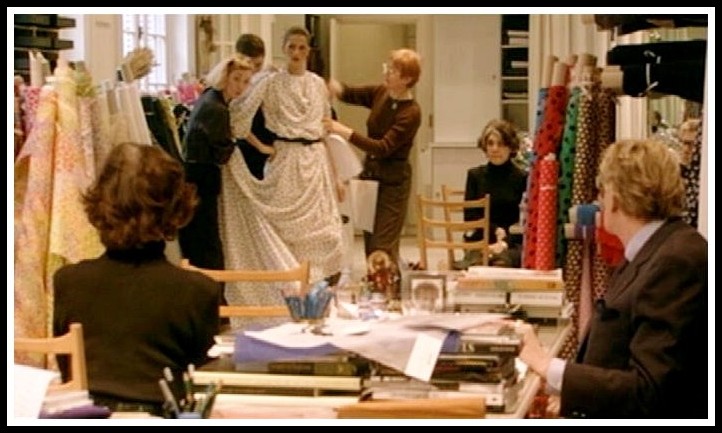
Yves Saint Laurent studio
ACT V: THE SECRET BIRTHS OF THE DESIGNS
To perform, in the allotted time, this fifth act, that of the ‘Secret Births of the Designs’, the flou, the tailleur, and all the workshops, drunk on the knowledge that they are ‘the architects and masons of Monsieur Saint Laurent’s taste’, start working with their fabrics in order to initiate the metamorphosis of the toiles into clothing: to create the miracle. Working with chalk, tape measure, needle and pins, snipping with squeaking scissors, they must find the proportions, volumes and energy of the fabric. Here the millimetre is the unit of measurement and the couturier’s sketch the absolute template. The process is a dogged pursuit of perfection in an almost mute effervescence. Here, everything whispers and works in a confident and hushed solidarity, beyond words. The murmuring silence of the workshops is almost like that of ‘long-united lovers who no longer need to explain themselves to understand each other’.

Yves Saint Laurent studio, Atelier flou
As soon as a dress is judged sufficiently developed to be put before the Grand Jury, premières and secondes, full of pride and anxious doubts, escort their mannequin to the holy of holies for a first, tense judgement. ‘Will he recognize his drawing?’ Thus begin hours and days of toing and froing between workshops and studio, a long processional ballet of fittings, each one a drama of love and anxiety. The rigour is infinite, the eye of Monsieur Saint Laurent as pitiless as it is tender when it comes to judging the fit between the dress and his dream. ‘I expect everything of my workshops, of their exquisite and immaculate work. That is what couture is all about!’

Yves Saint Laurent studio
In the great mirror of the studio, Amalia, a cardinal character in our play, moves hieratically forward in a narrow black skirt and a blouse in white organdy. Monsieur Saint Laurent watches. Silence. And the model, who does not yet know what this silence means, moves impassibly on her high heels, with the lofty grace of a goddess. In the language of the Maison, ‘She has the star’. The première and the two guardian angels, Anne-Marie and Loulou, are also studying the mirror, holding their breath. Now the oracle speaks: ‘It’s beautiful, all this white! It’s a divine blouse! But the skirt… a bit tighter at the bottom, I think.’ ‘More restricted?’ ‘Yes, that’s it. I can see it now.’ He smiles reassuringly and the première stands. ‘Now we’re going to finish and fine-tune a bit. It’ll be right tomorrow’.

Yves Saint Laurent studio
Other times—most often— the ecstasy is immediate, and recognition likewise. ‘It’s a dream! Esther, what a pretty dress that is! So light! ‘Thank you, sir.’ You aren’t too tired? ‘It’s all right, sir, we’ll manage.’ ‘That is ravishing, my dear Georgette!’ On one occasion, by grace or by magic, by daring to add honey-coloured envol at the bottom of the ebony sheath that had been asked for, the inspired talent of a première revealed, at the fitting, an unexpected truth of model no. 87 in the spring-summer 2001 haute couture collection: ‘Colette! I asked you for a ‘sausage’ (couture jargon for a sheath dress) and you have made me a masterpiece! It’s sensational! It’s quite marvellous, my dear Colette! That skirt! That ruffle… Extraordinary!’ Monsieur Saint Laurent takes his première in his arms. The emotion spreads and everyone applauds.

Alek Wek, Yves Saint Laurent studio
‘I do not think,’ said Saint Laurent in one of his Saint Catherine’s day speeches, ‘I do not think that we are ever more fascinated, dazzled, astonished than when we are working in front of the big mirrors of the studio on a model and everything is transformed, takes flight in another way, ending in gaiety, admiration of this perfection. We do not say it, but you have won. And you forget how hard you have had to work in your workshops.’ ‘My children, my talents beyond talent, my tendernesses, my queens, my kings and my princesses,’ he also said to these men and women he loved like a family, and as the best workshop in the world.

Yves Saint Laurent studio
And, for Yves Saint Laurent, after the headiness of triumph on the podium and the ovation that greeted no. 87, statuesquely set off by supermodel Alek Wek, the drama came to an end, with a heart-rending smile over that infinitely cruel emptiness that leaves you feeling like an orphan when it’s all over. Post coitum anima tristis est said the Ancients. So many fears, sleepless nights and dazzling triumphs disappearing into ‘the cold night of oblivion’! All these ideas that shot forth like meteorites, fatally doomed to ‘disappear like the ones before, like those to follow’ when one was dreaming of eternal creation: ‘What a thing it is, for those who really desired only that!’ Might not the bitter taste of that frustration have also helped orient Saint Laurent towards the ardent, instinctive quest for his style? That conquest of ‘the place and the formula’, as Arthur Rimbaud would have said, is probably one of the most intimate truths of the studio.

Yves Saint Laurent, Couture, SS 2001 | Photos courtesy of Vogue
YVES SAINT LAURENT: TWO BOOKS & A DVD

Alicia Drake, The Beautiful Fall

Jéromine Savignon, Yves Saint Laurent’s Studio

Yves Saint Laurent DVD 2 Features
YVES SAINT LAURENT IN ‘MARA, MARIETTA’
FROM ‘MARA, MARIETTA’
Part Three Chapter 8
̶ One can be original and still be perfect, Sprague. Look at Saint Laurent.
̶ The imperfection in his life outweighs the perfection in his art. So long as the net result is imperfection, the art lives.
̶ Rather curious, your theory! And besides, you haven’t defined perfection.
̶ It’s the idea of closure, completeness. Nature can afford to be perfect, because it’s constantly in a state of flux. There’s always an opening for the new. Man cannot, because civilization seeks fixity and permanence. So if you add closure into the mix, it’s a recipe for death. Perfection in art is deadly.
̶ A rather grandiose statement, don’t you think?
̶ No. Just compare Cabanel and Manet. The Birth of Venus is perfection…

Alexandre Cabanel, The Birth of Venus, 1863
… Olympia is imperfection. Manet’s painting is far more interesting.
̶ I defend perfection in the name of craft, not art. Being well-trained gives you the means to express your originality. And if you don’t have any, at least what you make will be well-made.
̶ True.
What exactly have I got against perfection? That schooling and I never got along? That I prefer the wildflower to the cultivar? The stray cat to the lapdog?
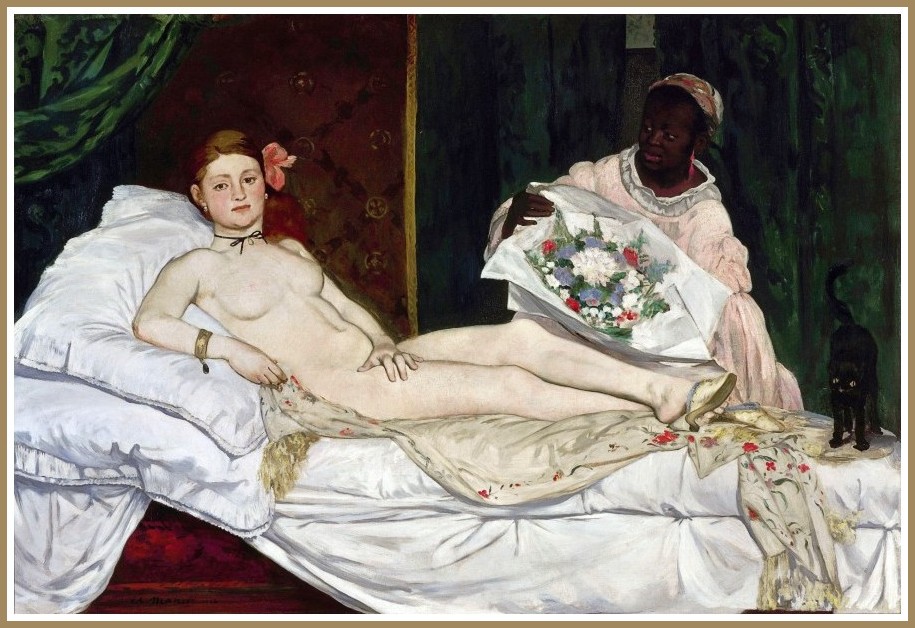
Édouard Manet, Olympia, 1863
MARA, MARIETTA: A LOVE STORY IN 77 BEDROOMS
A literary novel by Richard Jonathan
YVES SAINT LAURENT: THIRTEEN FASHION LOOKS
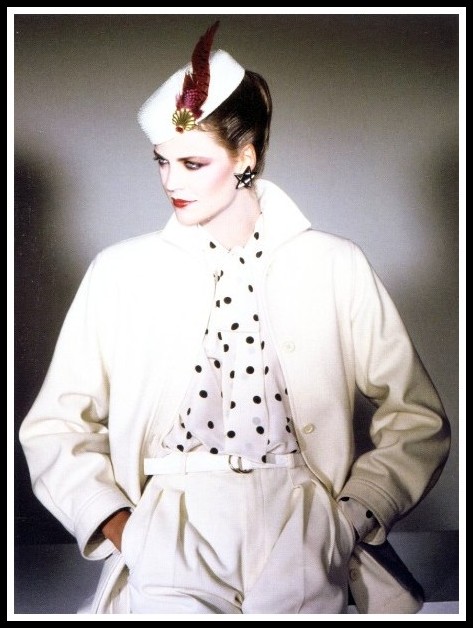
YVES SAINT LAURENT, RIVE GAUCHE, 1979
Mira Tibblin | François Lamy, Vogue

YVES SAINT LAURENT, RIVE GAUCHE, 1987
Christy Turlington | Patrick Demarchelier, Vogue

YVES SAINT LAURENT, RIVE GAUCHE, 1989
Suzanne Lanza | Neil Kirk, Vogue

YVES SAINT LAURENT, 1962
Irving Penn, Vogue

YVES SAINT LAURENT, 1964
Jean Shrimpton | David Bailey, Vogue

Yves Saint Laurent, Couture, 1969 | David Bailey, Vogue

YVES SAINT LAURENT, RIVE GAUCHE, 1994
Carla Bruni | Kim Knott, Vogue
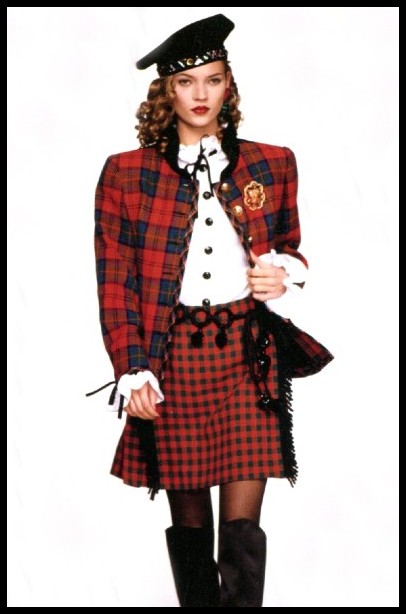
YVES SAINT LAURENT, RIVE GAUCHE, 1994
Kate Moss | Andrew Lamb, Vogue

YVES SAINT LAURENT, RIVE GAUCHE, 1987
Cindy Crawford | Patrick Demarchelier, Vogue

Yves Saint Laurent, Broadway suit, 1978

YVES SAINT LAURENT, RIVE GAUCHE, 1977
Willie Christie, Vogue
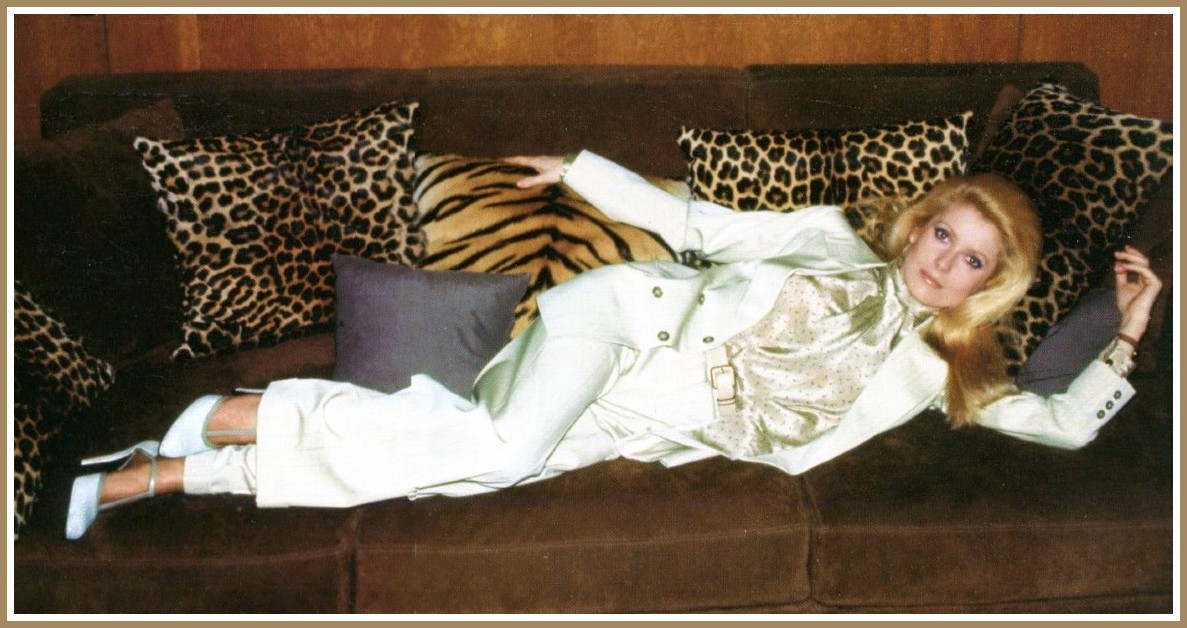
Yves Saint Laurent, 1976 | Catherine Deneuve | Oliviero Toscani, Vogue

Yves Saint Laurent, 1970 | Catherine Deneuve

YVES SAINT LAURENT, 1936-2008
Juergen Teller




